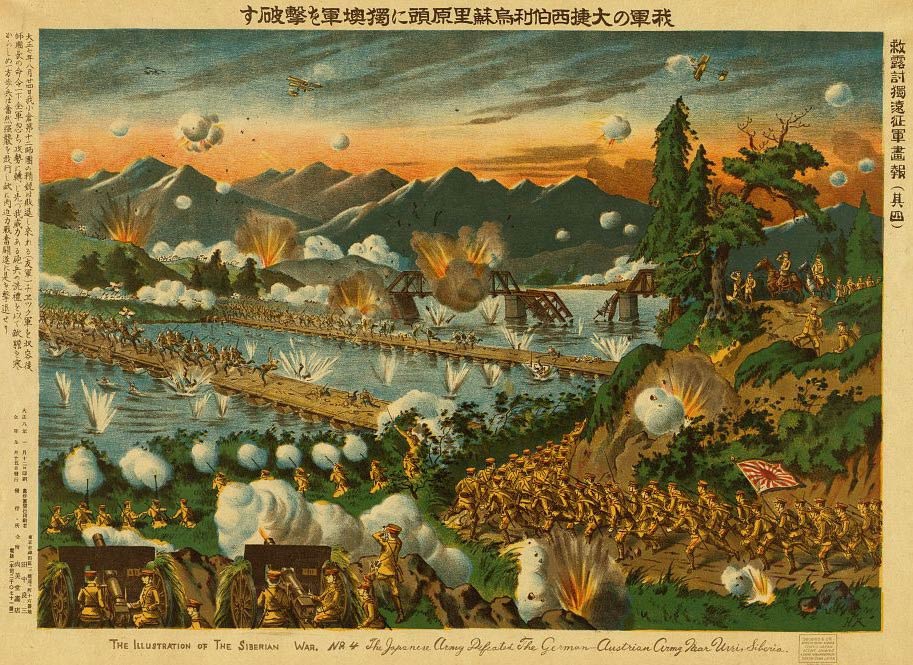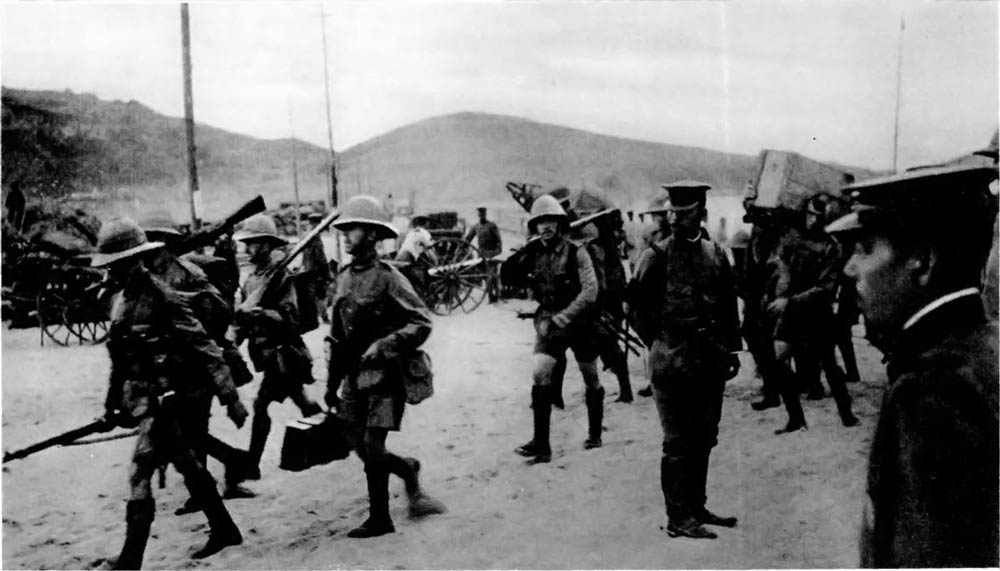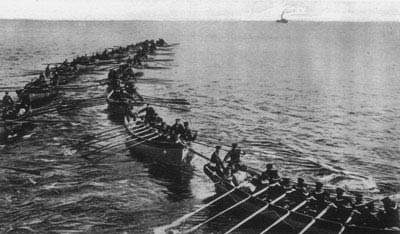| Siege of Tsingtao | |||||||
|---|---|---|---|---|---|---|---|
 |
|||||||
|
|||||||
| Contenders | |||||||
| Unit Strength | |||||||
| 24,500 infantry 142 artillery 1 seaplane carrier 3 battleships 1 battlecruiser 1 destroyer Aircrafts unknown |
3,650 infantry 324 Hungarian crew of the Kaiserin Elisabeth 1 protected cruiser 1 torpedo boat 4 gunboats 1 aircraft |
||||||
| Casualties and Deaths | |||||||
| Total: | Total: | ||||||
| 727 killed 1,335 wounded 1 destroyer sunk 1 protected cruiser sunk 1 battleship damaged 1 aircraft destroyed |
199 killed 504 wounded 1 protected cruiser scuttled 1 torpedo boat scuttled 4 gunboats scuttled |
||||||
| Part of World War I | |||||||
The Siege of Tsingtao was an attack on a German base in China by the British and the Japanese. Many assume that all the battles during World War I took place in Europe and North Africa. As this battle shows, that is certainly not the case.
History of the German Colony
In the late 19th century, two German missionaries were murdered in China. To reduce tensions between the nations, the Chinese government opted to lease the German government a colony in Tsingtao for 99 years. Germany acquired this lease in 1898 and quickly built a port and a naval base.
Over 4,000 troops were stationed on the base. This gave German its primary installation in the Far East. If the allies could successfully destroy the installation, Germany would lose a major tactical edge.
Tensions Rise
 The Germans had been mining the waters of Japan and China for some time. On August 15, 1914, the Japanese government made a formal decree that the Germans were to remove their men-o’-war from the Pacific waters and to cede control of Tsingtao to Japan.
The Germans had been mining the waters of Japan and China for some time. On August 15, 1914, the Japanese government made a formal decree that the Germans were to remove their men-o’-war from the Pacific waters and to cede control of Tsingtao to Japan.
Japan maintained a strong allegiance with Great Britain and certainly looked to provide aid for its ally. However, Japan also saw the situation as a great opportunity to gain a foothold in China by acquiring Tsingtao.
Realizing Germany would not likely agree to the demands, on August 16, 1914, plans were set in motion to attack the port. These plans were being set in motion one full week prior to a formal declaration of war. War with Germany was unavoidable due to the naval activity Germany was involved with in the region.
The Siege Commences
On September 2, 1914, following a declaration of war on the part of Japan, 23,000 soldiers along with artillery units attacked the port. The British would aid Japan by sending 1,500 troops to the region. Britain was unsure of the motivations on the part of Japan in seizing the port.
As a result, the British did not send a massive number of troops to aid Japan. In many ways, the British wished to take a wait-and-see attitude regarding what the eventual outcome would be. Regardless of Japan’s motivations, the British would benefit from any major losses suffered by the German military either in Asia or in Europe.
Japan Gains an Advantage
 The German troops were significantly outnumbered in the Siege of Tsingtao. Yet, the Germans were able to fend off the Japanese and British attack for two months. Eventually, the numbers proved to be overwhelming and the Germans fell on November 7, 1914. The Japanese troops employed night raids and did not launch the frontal assaults that were common on the western front.
The German troops were significantly outnumbered in the Siege of Tsingtao. Yet, the Germans were able to fend off the Japanese and British attack for two months. Eventually, the numbers proved to be overwhelming and the Germans fell on November 7, 1914. The Japanese troops employed night raids and did not launch the frontal assaults that were common on the western front.
On November 10, the Germans would hand over control of the port to the Japanese who would now gain a major strategic victory. After Japan gained full control of the port, the British troops would withdraw and were reassigned elsewhere in the region. A military beachhead in China would deliver Japan a military strategic benefit well into the Second World War.